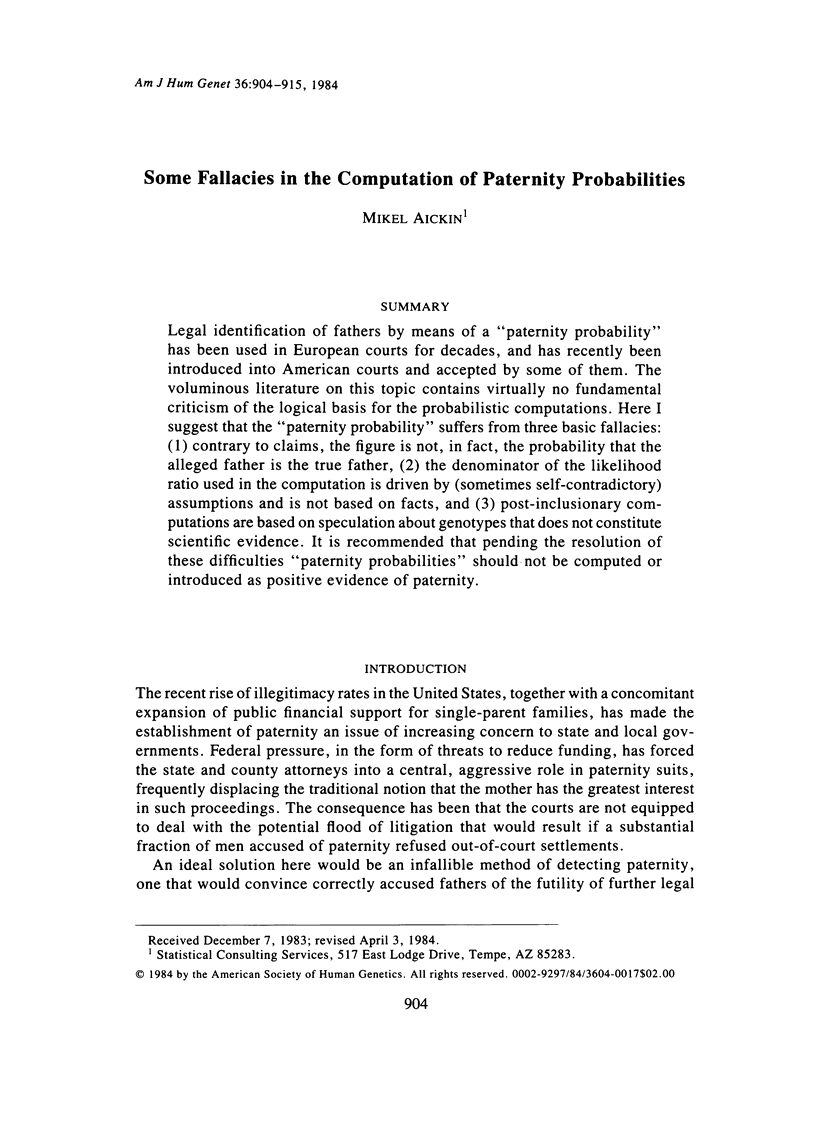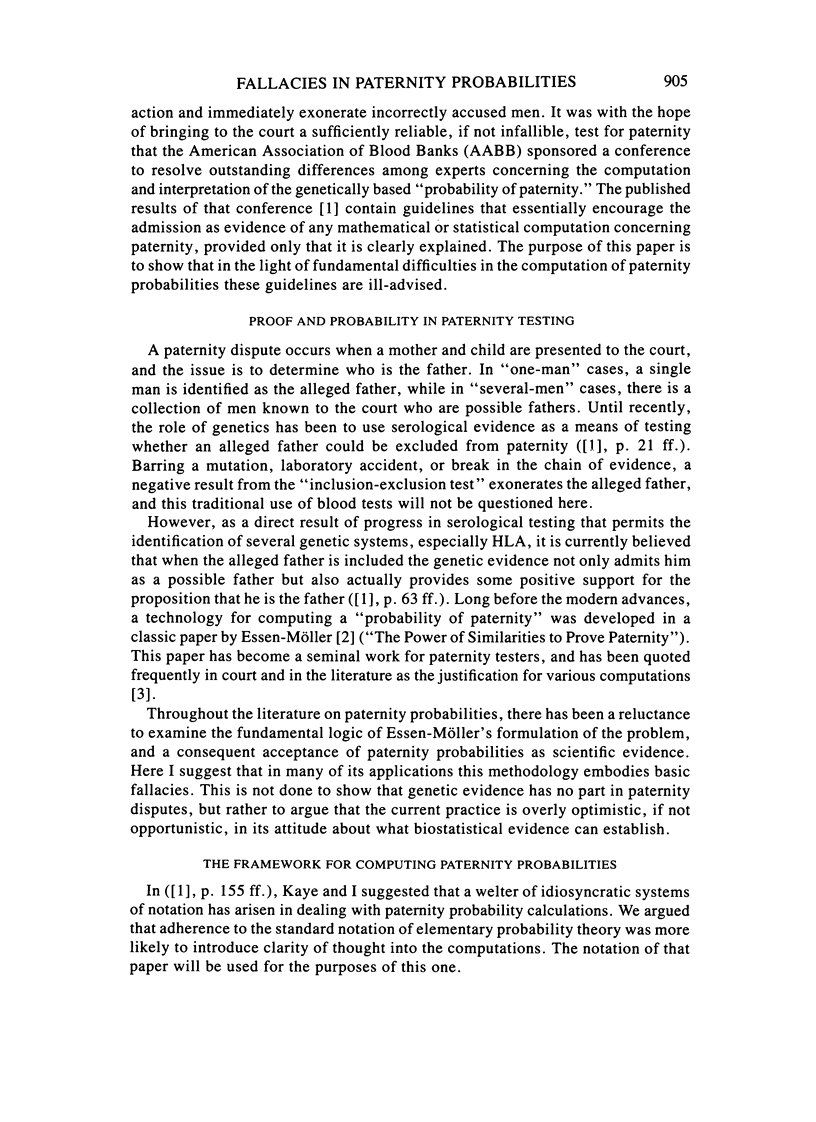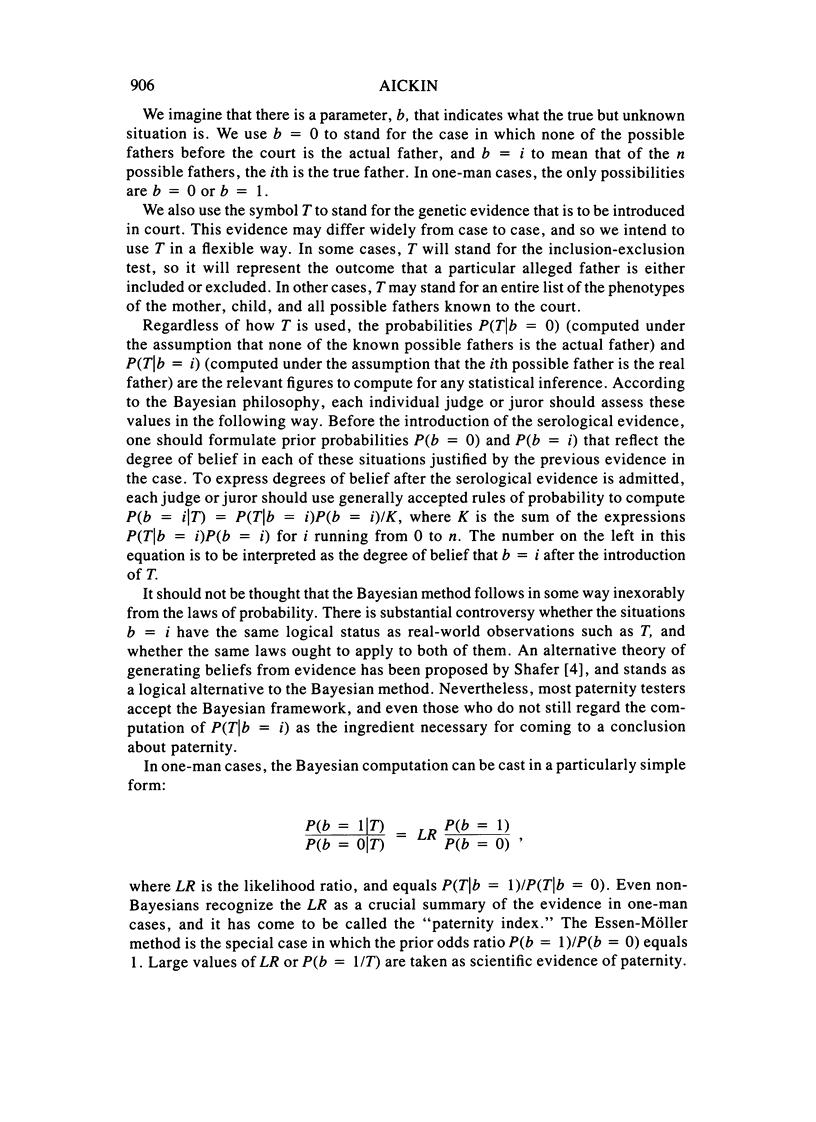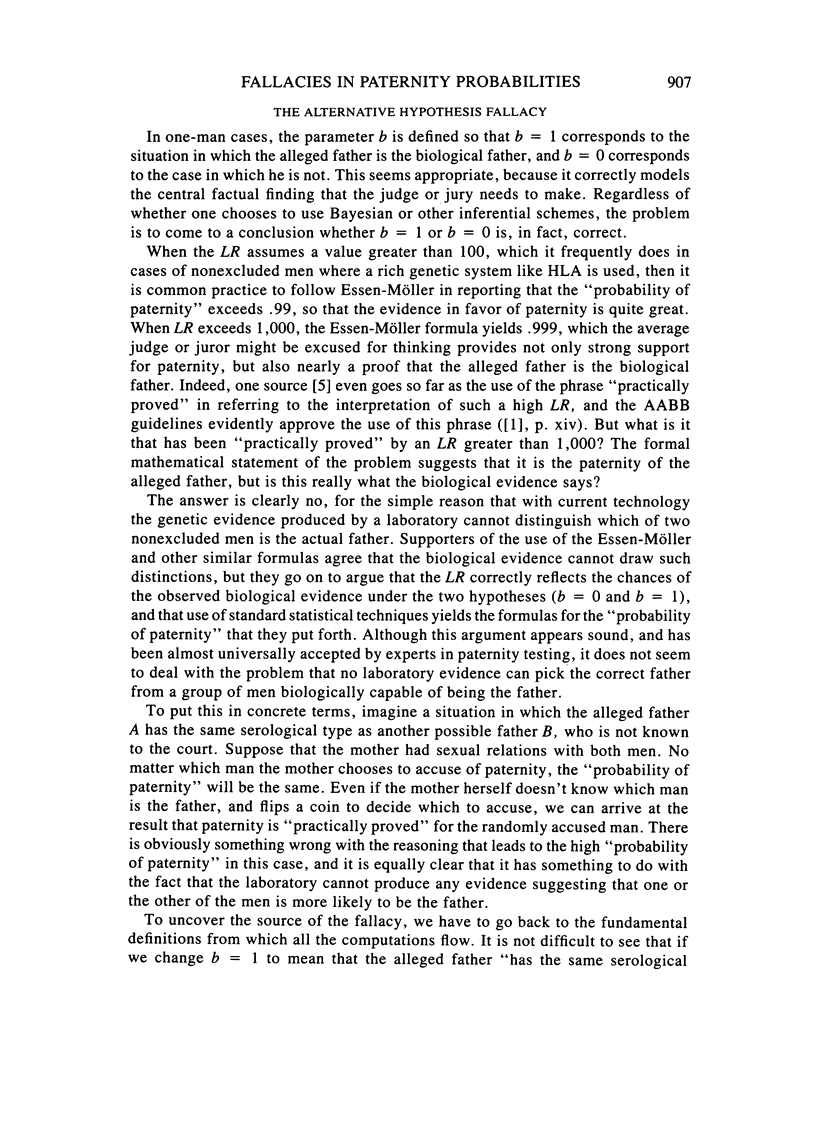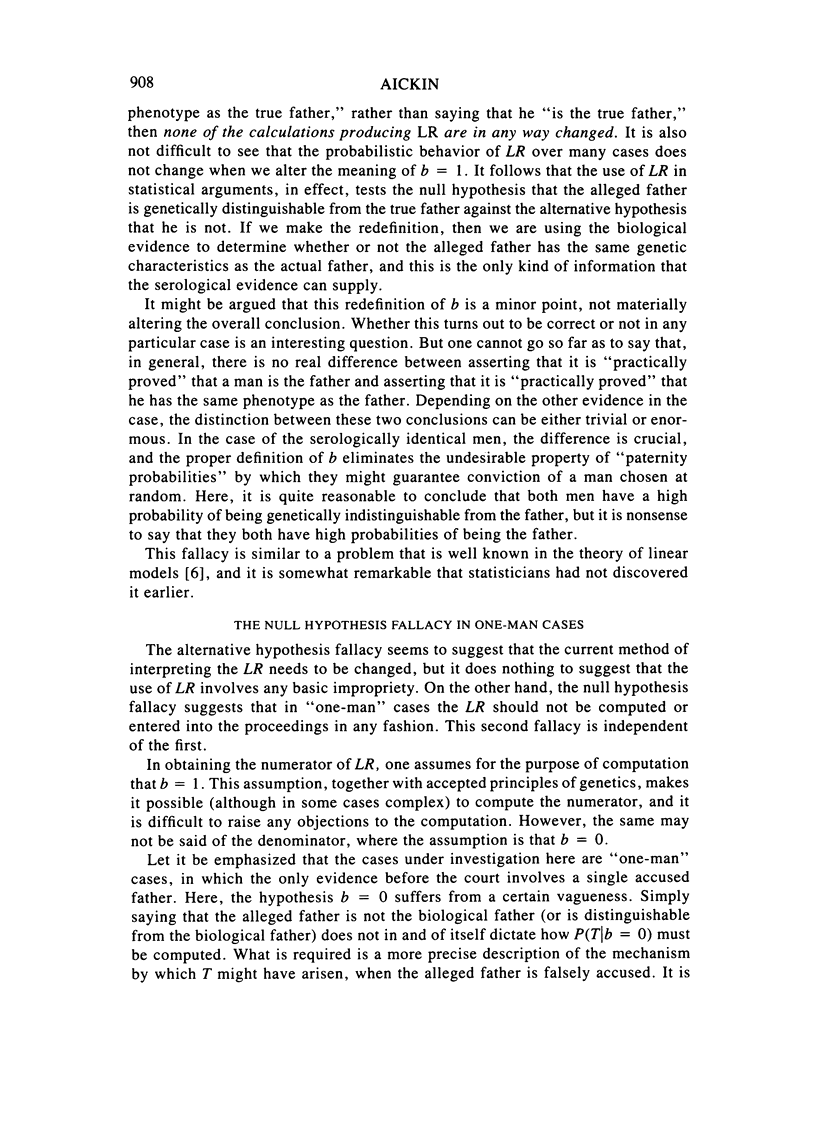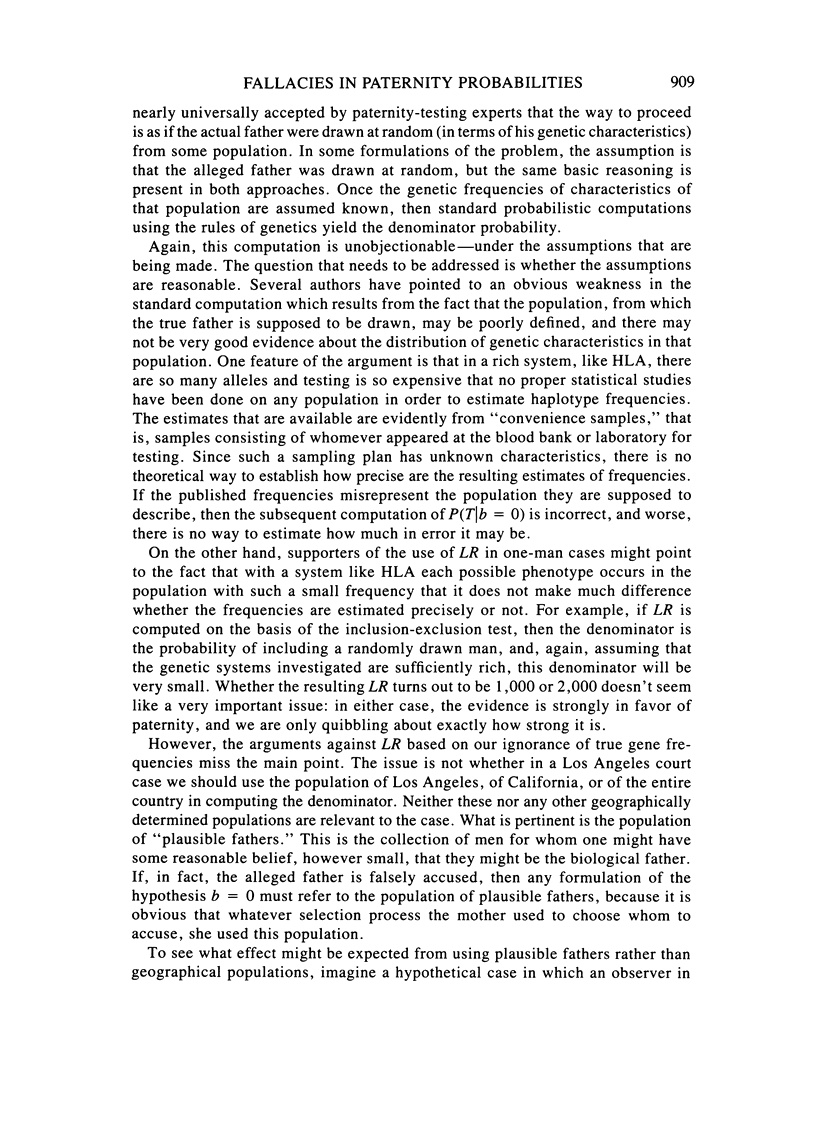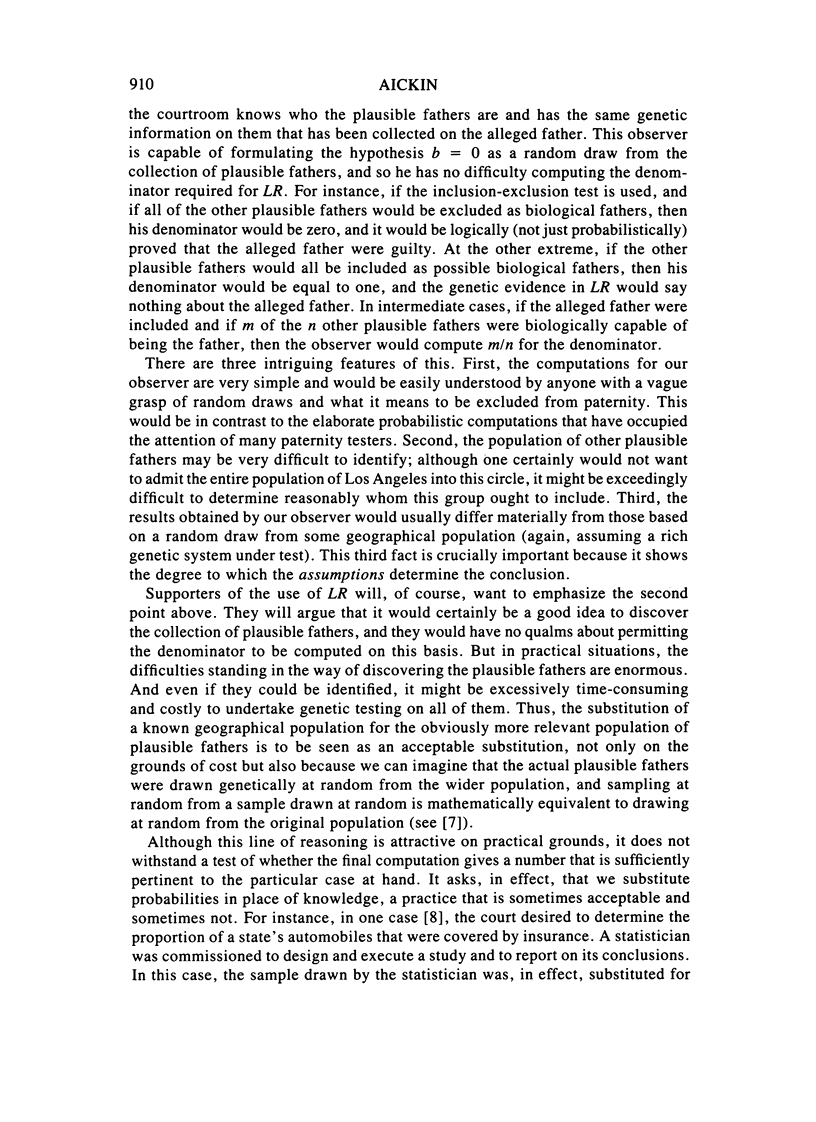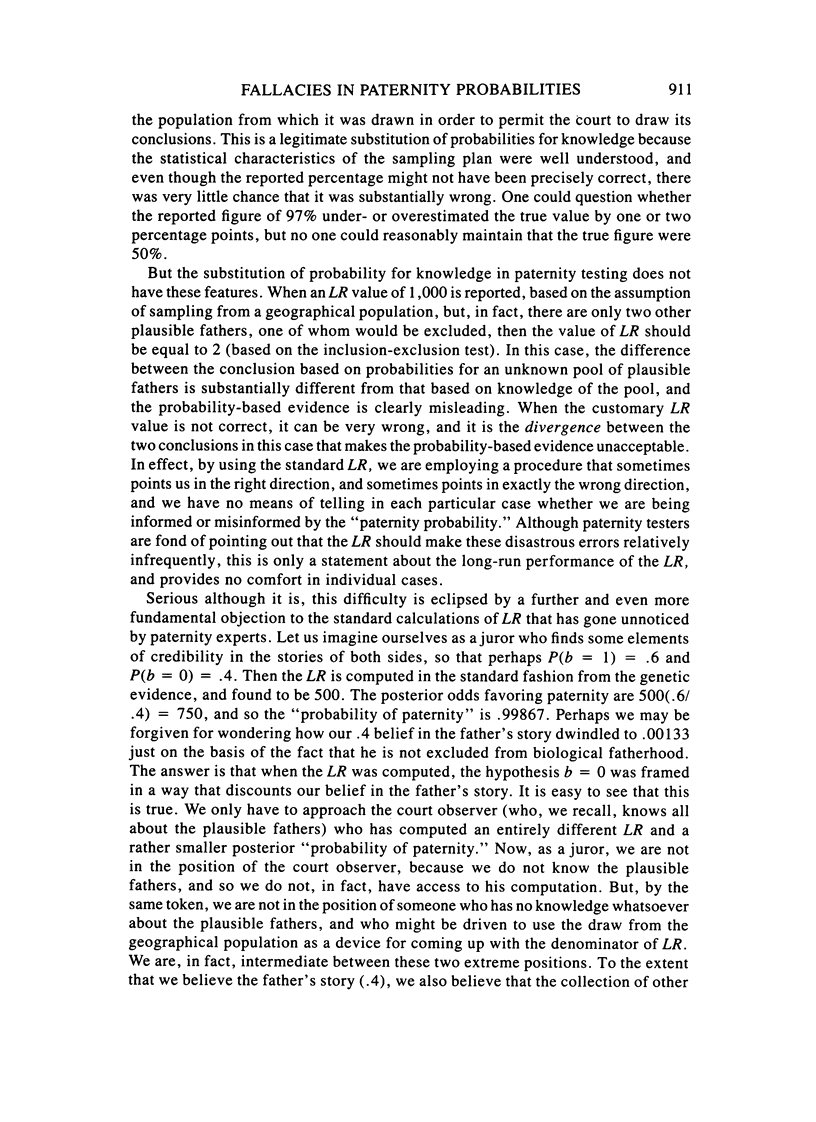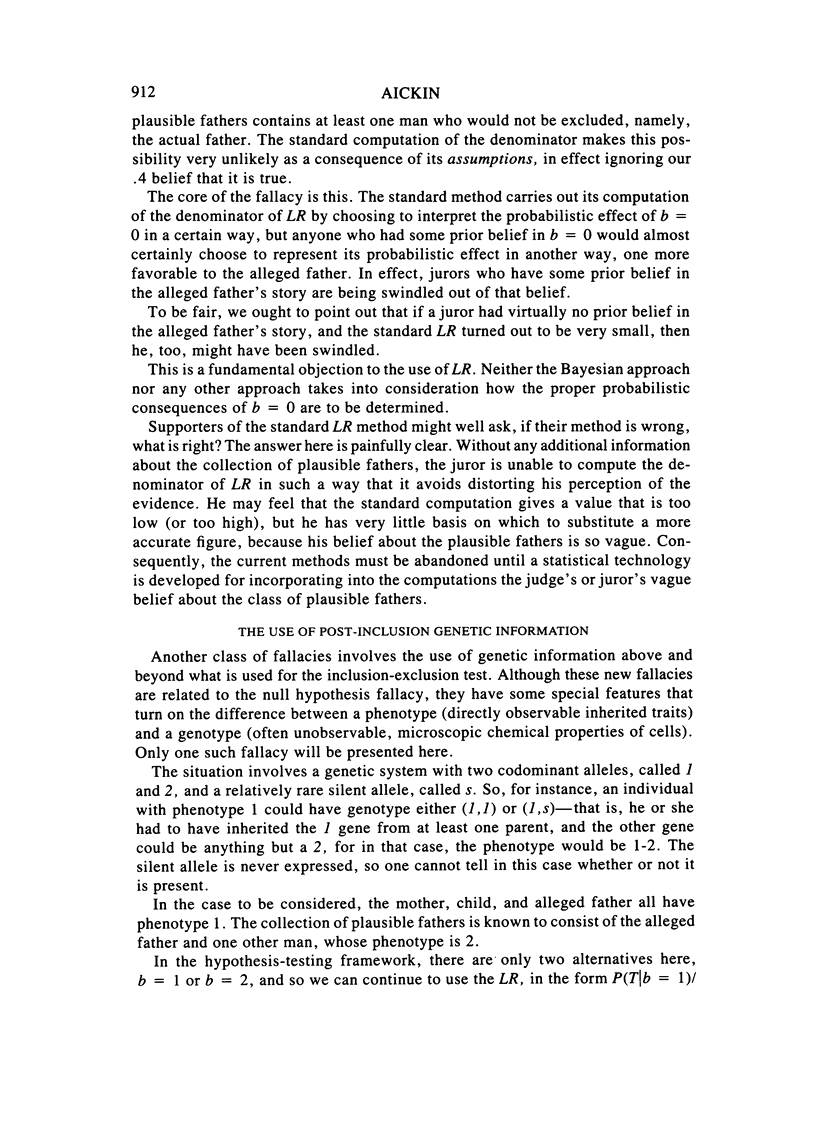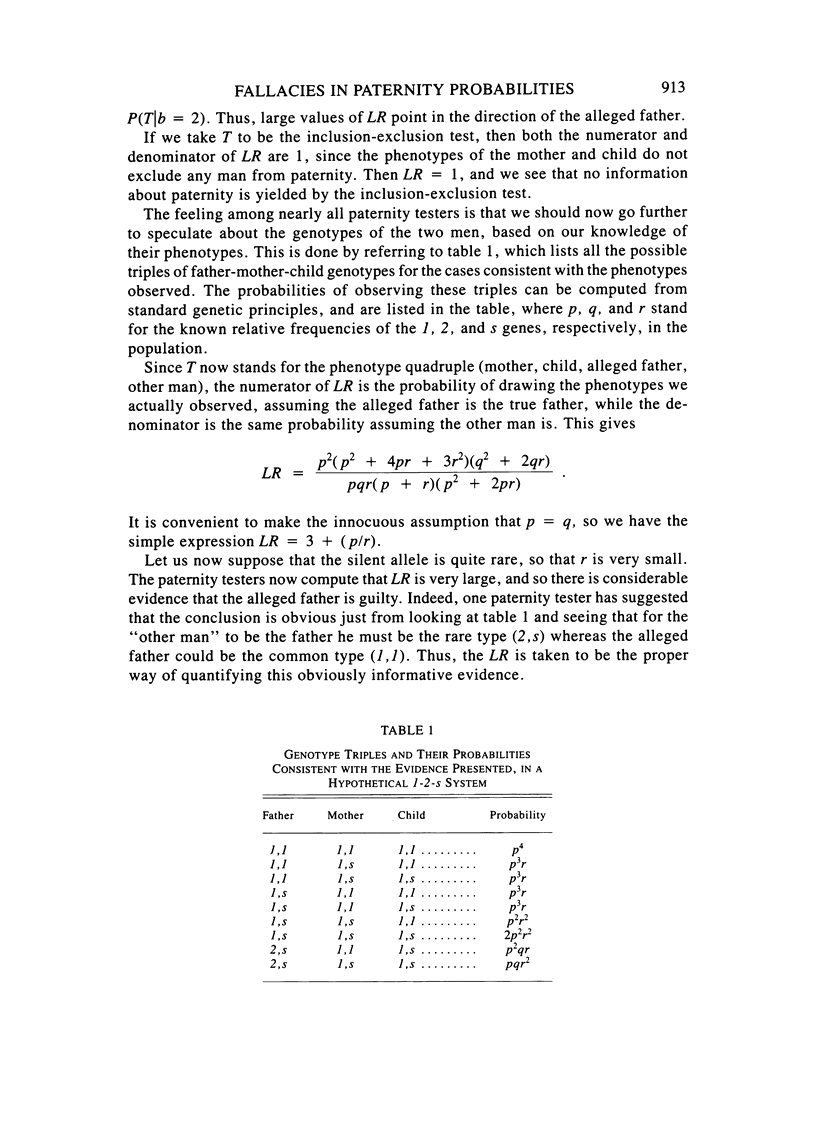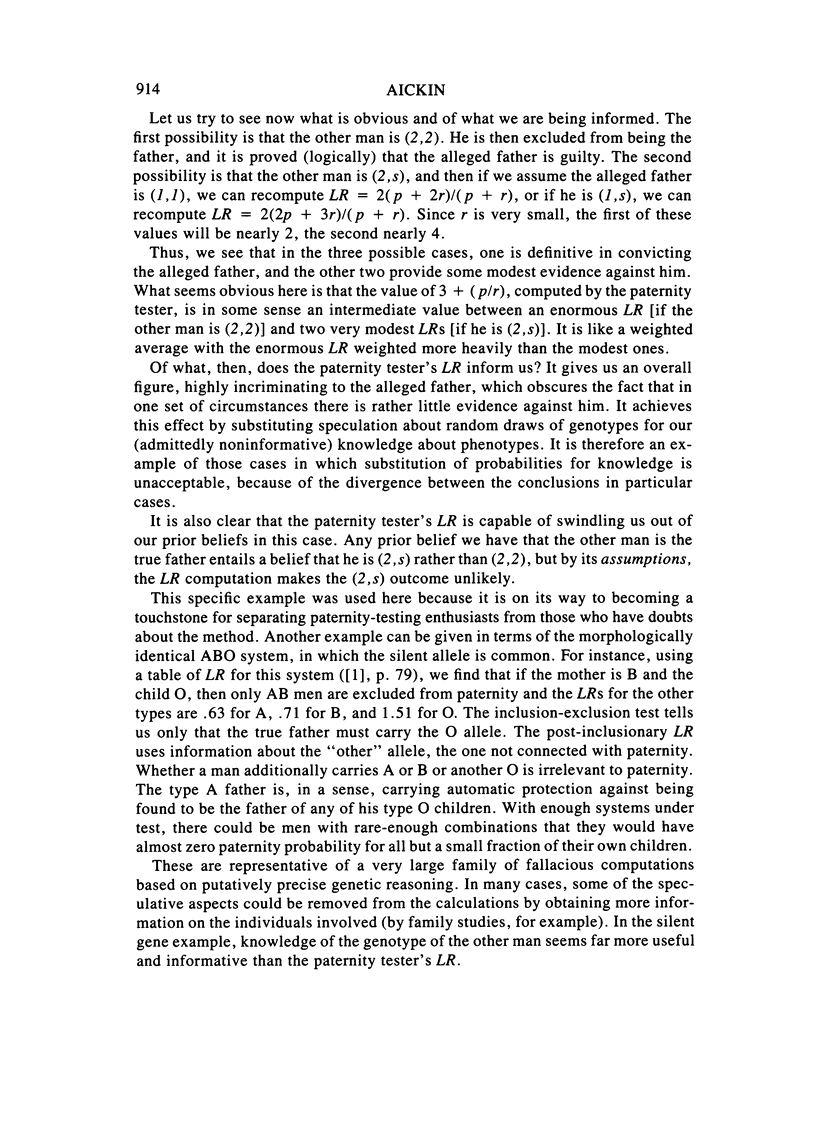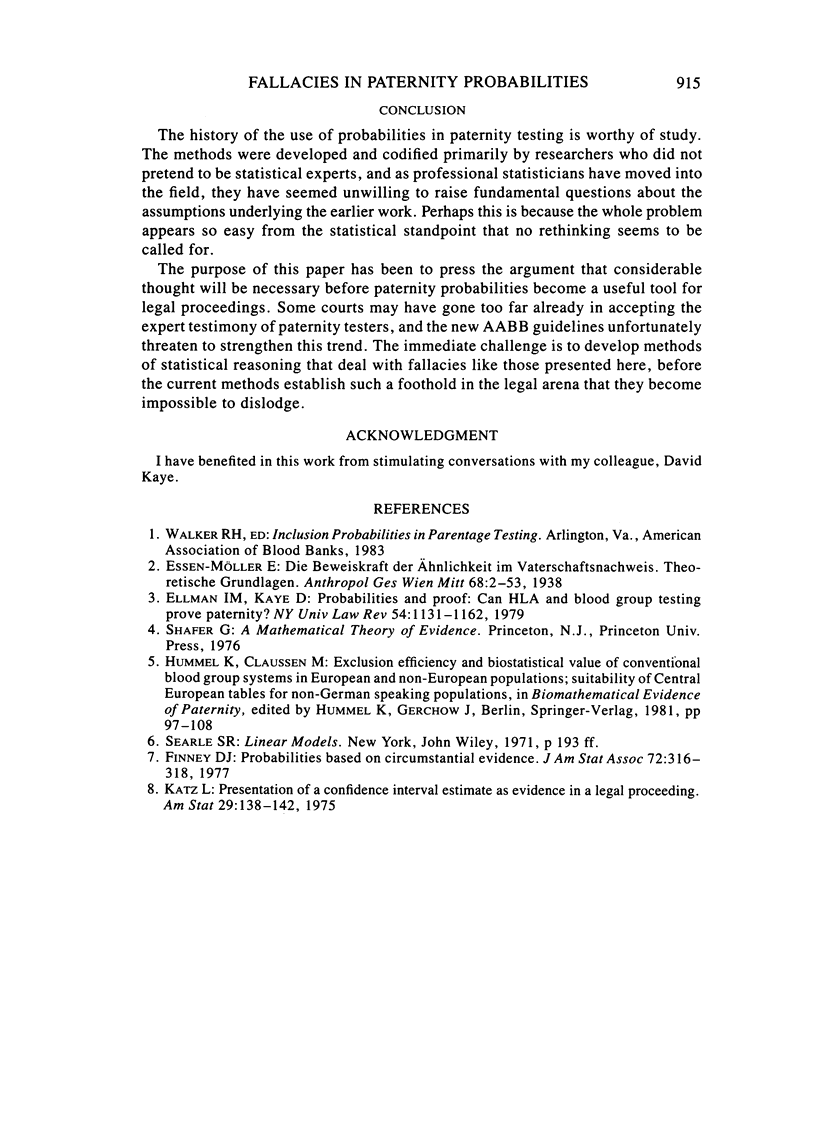Abstract
Legal identification of fathers by means of a "paternity probability" has been used in European courts for decades, and has recently been introduced into American courts and accepted by some of them. The voluminous literature on this topic contains virtually no fundamental criticism of the logical basis for the probabilistic computations. Here I suggest that the "paternity probability" suffers from three basic fallacies: (1) contrary to claims, the figure is not, in fact, the probability that the alleged father is the true father, (2) the denominator of the likelihood ratio used in the computation is driven by (sometimes self-contradictory) assumptions and is not based on facts, and (3) post-inclusionary computations are based on speculation about genotypes that does not constitute scientific evidence. It is recommended that pending the resolution of these difficulties "paternity probabilities" should not be computed or introduced as positive evidence of paternity.
Full text
PDF